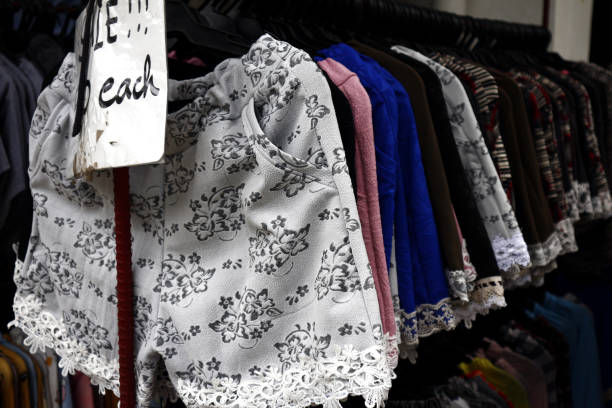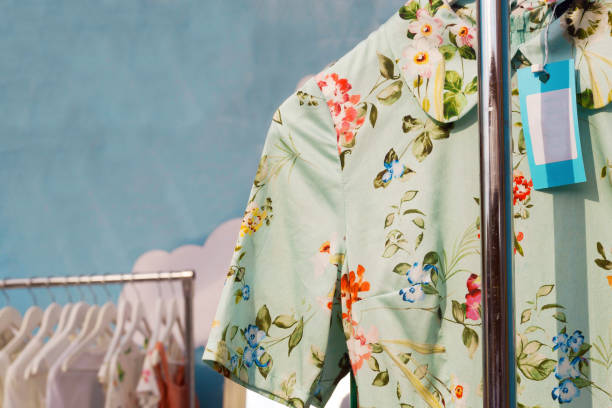Are you intrigued by the unique charm of vintage fashion but unsure of how to begin your thrift shopping journey? This guide will walk you through the essentials of buying second-hand clothing and incorporating vintage pieces into your wardrobe. From identifying quality pieces to tips on mixing and matching, here’s everything you need to know about vintage fashion thrift shopping.
Understanding Vintage Fashion

Vintage fashion refers to clothing and accessories that are at least 20 years old. These items offer a tangible connection to the past, featuring unique designs and high-quality materials that are hard to find in modern fast fashion. Whether you’re looking to replicate a specific era’s style or simply love the idea of wearing something with history, vintage fashion allows you to express your individuality.
One of the significant benefits of vintage fashion is its sustainability. By choosing secondhand items, you’re reducing waste and reducing the demand for new clothing production. This eco-friendly practice helps preserve the planet while letting you build a distinct, timeless wardrobe.
The Benefits of Thrift Shopping
Thrift shopping offers numerous advantages aside from just finding unique vintage pieces. Here are some key benefits:
-
Budget-Friendly:
Thrift stores often price their items significantly lower than retail stores, allowing you to save money on stylish clothing. -
Wide Variety:
You’ll find a diverse range of styles, sizes, and eras, making it easier to curate a truly unique wardrobe. -
Quality Materials:
Older clothing is often made from higher-quality materials than modern fast fashion items, offering better durability and longevity. -
Sustainable Choice:
Purchasing secondhand helps to reduce textile waste and the environmental impact of the fashion industry. -
Supporting Charities:
Many thrift stores are operated by non-profit organizations, so your purchases often support good causes.
Tips for Successful Thrift Shopping
Thrift shopping can be overwhelming at first, but these tips will help you become a savvy secondhand shopper:
Research and Plan
Before heading to the thrift store, do some research. Identify the kind of pieces you’re looking for, such as specific styles, brands, or eras. Having a plan can save you time and help you stay focused. It’s also helpful to know the store’s layout and busy times to make your trip more efficient.
Inspect the Items
When you find a piece you like, inspect it closely for any signs of wear and tear. Check for stains, holes, missing buttons, and other damage that might require repairs. This step ensures you get items that are not only stylish but also in good condition.
Try Everything On
Sizes have changed over the decades, so a vintage size label may not match today’s standards. Always try items on to ensure a proper fit. Take your measurements and bring a measuring tape to make sure pieces will fit you comfortably.
Incorporating Vintage Pieces into Your Wardrobe
Once you’ve scored some fantastic vintage finds, it’s time to integrate them into your contemporary wardrobe. Mixing vintage with modern pieces can create a balanced and stylish look. Here are some suggestions:
-
Statement Pieces:
Use a vintage item as the focal point of your outfit, such as a bold jacket, dress, or unique accessory. -
Layering:
Combine vintage and modern layers to create depth and interest. A classic vintage blouse worn under a modern blazer can look chic and sophisticated. -
Accessorize:
Vintage accessories, such as handbags, jewelry, and scarves, can easily elevate your look without overwhelming it.
Conclusion
Vintage fashion and thrift shopping offer a delightful blend of sustainability, affordability, and uniqueness. With the right approach, you can build a stylish and distinctive wardrobe that reflects your personality while making environmentally conscious choices. Happy thrifting!
FAQs
Is all vintage clothing secondhand?
Yes, vintage clothing typically refers to secondhand items that are at least 20 years old. However, you may occasionally find new old stock (NOS), which are vintage items that were never worn or sold.
What should I avoid when thrift shopping?
Avoid items with significant damage that are difficult to repair, such as large holes, heavy stains, or strong odors. Also, steer clear of items that don’t fit well or are made from poor-quality materials.
How can I ensure I’m buying authentic vintage items?
Look for signs of authenticity such as labels, stitching, and fabric types from the specific era. Familiarize yourself with vintage brands and styles to help identify genuine pieces. Ask the store staff for more information about an item’s history if needed.
What are some popular vintage fashion eras?
Popular vintage fashion eras include the 1920s (flapper dresses and art deco styles), 1940s (wartime utility fashion), 1950s (rockabilly and pin-up looks), 1960s (mod and bohemian styles), and 1980s (bold colors and oversized designs).
Can I find vintage fashion online?
Yes, there are many online stores and marketplaces dedicated to vintage fashion, such as Etsy, eBay, and specialized vintage clothing websites. Always review the seller’s reputation and return policy before purchasing.
